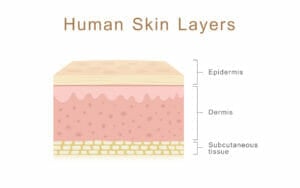An Overview of Nutrient Absorption

As long as you get the required nutrients in their optimal doses you may not think it matters how they get into your system or you may think that oral multivitamins are always best but there are multiple ways to consume your daily supplements and you may have a preference based on your health goals or challenges. Read on for a more complete understanding of how the body absorbs nutrients and what may work best for you.
Table of Contents
The Most Common Route to Nutrient Absorption—the Small Intestine

Known for its length at around 20 feet (7 meters), the small intestine, also known as the small bowel, is lined with soft tissues that wrinkle and fold together. These tissues are covered with microscopic protrusions called villi. The villi are hairlike and their abundance, along with the many tissue folds, create an incredibly large surface area—necessary to maximize the absorption of nutrients in food.
The villi function similarly to straws, drawing nutrients up through their structures and diffusing them into the bloodstream where they can be transported throughout the body. The great length of the small intestine, along with its many folds and villi give the body ample opportunity to draw out nutrients.
Although not all nutrients are absorbed this way, most vitamins and minerals are. Glucose, amino acids, and fats each require different, additional actions from pancreatic secretions, bile, hormones or electrolytes. Given that intestinal absorption of nutrients requires the digestive process, it has limitations—including the length of time it takes to fully absorb into the body, from 12-24 hours, as well as inefficiencies when digesting a large meal.
Other Routes to Nutrient Absorption

Sublingual nutrients also tend to have a higher bioavailability since they aren’t subject to digestive juices, which may cause them to degrade to an unusable degree by the time they make it to the bowel. The speed of absorption coupled with the higher dose available for the body to use make them best suited for water soluble vitamins your body can’t store including vitamins B-12 and C.

The fact that skin is a barrier makes it harder to use the skin as a nutrient delivery system. In order to penetrate the many layers that make up the skin and be diffused into the bloodstream certain techniques must be used. The compounds used in transdermal formulations must be fat-soluble (to go through the layers of fat in the skin) and small. Nanoparticles and encapsulated products may make absorption through the skin considerably easier, as do the micro-needles sometimes used with topical patches.
Rectal suppositories have been used for decades as a way to bypass the digestive system and get compounds into the bloodstream. Similarly to sublingual application, the compounds are absorbed into the tissues and blood vessels of the rectum. Suppositories have been found to have a higher absorption rate than the oral route (2) but the types of vitamins and nutrients that can be absorbed this way are more limited due to the lack of digestive enzymes present.
Why Choose Different Routes to Nutrient Absorption

While heavy metals like zinc, iron and copper are necessary in small doses, they sure can be rough on the digestive system!
There are quite a few reasons to take in vitamins through routes other than the mouth. Some people are unwilling or unable to swallow vitamins, especially since multivitamins can come in sizes ranging from large to exceptionally large. Some vitamins, especially metals like iron and zinc can be really hard on the stomach lining so for people with more delicate stomachs, other routes may be a better option.
Accessing nutrient absorption sites other than the small intestine may be beneficial if you experience nausea and/or vomiting. Not only do they simply bypass the stomach to reduce irritation, if you are experiencing vomiting, alternative nutrient absorption routes will increase the likelihood of the nutrients being absorbed. Plus, as noted above, the direct application of vitamins to the skin may be beneficial.
If you or a loved one has recently had bariatric surgery, a route surpassing the stomach may be a perfect choice. Post-op, doctors often recommend a complete multivitamin to cover any loss of nutrients that you may experience from eating less food. If the surgery was done recently, doctors may recommend a liquid or chewable vitamin and one survey concluded “if available, alternative drugs less dependent on proximal small bowel function can be tried. Creative solutions such as transdermal and parenteral administration should be sought.” (3)
Ways to Increase Nutrient Absorption
In addition to trying routes with a higher known bioavailability, like sublingual formulations, there is supplement technology that increases the amount of nutrients that make it into your system.

No matter what delivery method you choose or what your supplementation goals are, make sure you buy products with the appropriate technology for your needs and only the highest quality.
Thank you for taking the time to read An Overview of Nutrient Absorption
Please note: All information presented to you in this website is intended for your general knowledge only and is not a substitute for medical advice or treatment for specific medical conditions. We cannot, and will not give you medical advice. We strongly recommend you consult your physician for any and all specific health issues. If you have any questions or contributions, please contact us via email or phone-call. We are constantly looking for new information to promote wellness – and hearing from you would make our day.
Live Vibrantly!
References:
- Role of Micronutrients in Skin Health and Function
- Absorption of Vitamin B12 in a Rectal Suppository
- Vitamin, Mineral, and Drug Absorption Following Bariatric Surgery
- Liposome: classification, preparation, and applications

